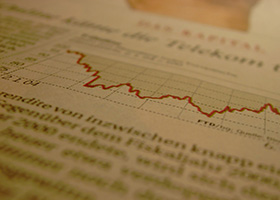
“The difficulty lies not so much in developing new ideas as in escaping from old ones.” John Maynard Keynes
Based upon leading research from Mordecai Kurz’s new theory of Rational Beliefs and the original work of Robert Merton and Paul Samuelson on optimal rebalancing, Wegelin Asset Management introduces a practical dynamic indexing implementation of a completely new paradigm for financial economics and investment management.
Modern Portfolio Theory (MPT) and the Efficient Market Hypothesis (EMH) developed at the University of Chicago lie at the heart of index investing. MPT was presented in 1952 by Professor Harry Markowitz in his seminal work “Portfolio Selection”, while the EMH was formulated by Professor Eugene Fama in 1970.
However, EMH and in consequence, the case for indexing by market capitalization have increasingly been put into question. Why?
EMH and investing by market capitalization, require that investors act
Nonetheless, the mere existence of persistent bull and bear markets and market over and undershoot, show that assets are not always correctly priced; and an index, weighted by market capitalization exhibits pro-cyclicality. Under capitalisation weighted indexing methodology, overvalued assets tend to be over-weighted and undervalued shares under-weighted.
The new logic from Mordecai Kurz recognizes that asset class returns are not i.i.d. (identically and independently distributed) and that accordingly, the investors optimal asset allocation will always depend on the current situation or ‘state’ of the market. Adopting this view leads investors to replace the concept of an optimal portfolio with the concept of an optimal strategy. This optimal strategy joins strategic and tactical asset allocation at the hip.
Like the theory of efficient markets, the new theory assumes that investors maximize their expected, risk-adjusted return and also act rationally. The big difference lies in their ability to forecast. The new theory of rational beliefs states that investors are indeed capable of making forecasting errors. They hold different beliefs that change over time, reflecting differing levels of optimism and pessimism about future returns. This creates short-term market overshoot as well as long-term bull and bear markets.
What implications do these results hold for the investor?

Drawing on the compelling arguments from Kurz’s new Theory of Rational Beliefs, this new indexing strategy applies a dynamic weighting scheme to countries and global sectors based upon attractiveness (valuation, quality and 
By considering the position of global stock markets and global sectors in their long-term bull- and bear market cycles and acknowledging the real world weaknesses of EMH assumptions, investors can now allocate capital dynamically and more efficiently, eliminating the pro-cyclicality of a capitalization weighted index (overvalued shares tend to be over-weighted, and undervalued shares under-weighted).
Investing according to this new dynamic indexing methodology would have generated a returns difference of 6.7% p.a since 1970 with an information ratio of 0.8.
Dr. Christian Raubach is Managing Partner, Wegelin Asset Management

